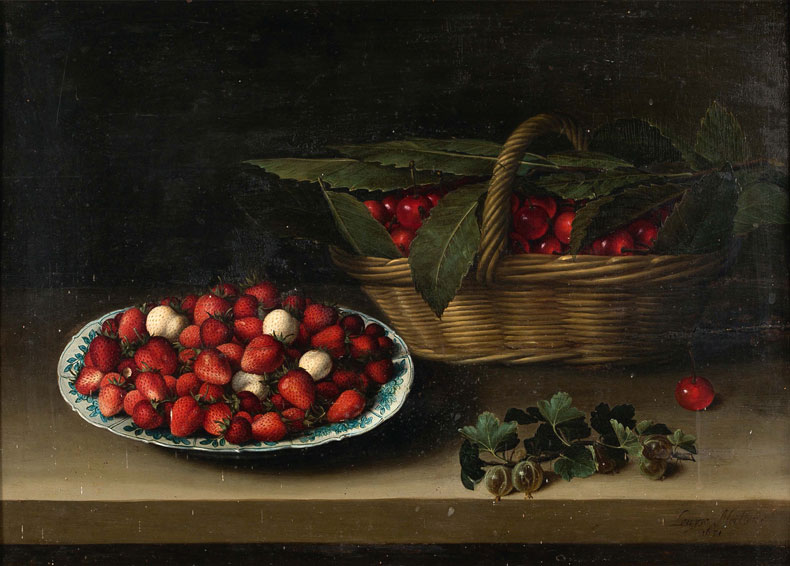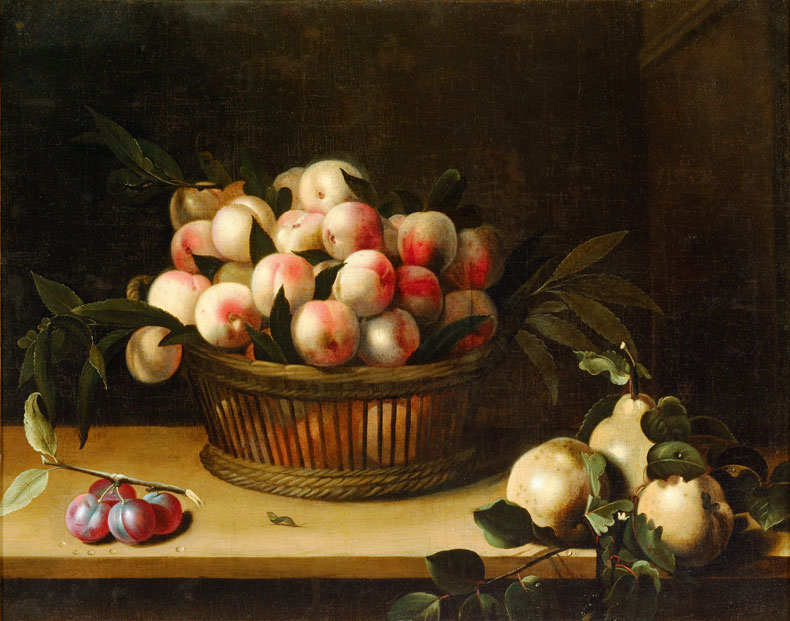From the December 2025 issue of Apollo. Preview and subscribe here.
Abundance is the contemporary spectacle. We know this. Most of us can have as much of anything as we want, all of the time. Supermarket shelves overflow with apricots, with berries, regardless of the season. In fact, outside of our bodies’ temperatures, there is no season. Well, there are some seasons. There is ‘wedding season’ and there is ‘party season’. The latter is similar to – though not the same as – what we used to call ‘winter’.
‘Party season’ is memorialised by photographs that are committed to the Instagram grids of ‘micro-influencers’ (‘creators’ with a following of between 1,000 and 100,000) and on the pages of magazines. In the art world, and those adjacent to it, there is a distinct look to these photographs. Grapes overflow from cake-stands on to salvaged oak boards resplendent with figs and cheese. Creams are piped, dolloped, swirled. Tablecloths are often white. Fruits tumble, which is a word Jeremy Lee, proprietor of the restaurant Quo Vadis in London’s Soho, uses fondly, so everyone else does, too. Champagne coupes are arranged into towers; langoustines are arranged into towers; cakes are stacked into towers, as is traditional.
It does not matter how the food exits the building, be it in gut, or handbag, or drain, or bin. All that matters is the image.

As Christmas approaches, the production and reproduction of these images increases in its relentlessness. And on other parts of the internet, it is much the same. Twelve months after their last visit, the mums of Mumsnet swarm The Official Christmas Fridge Thread. The images are equally curated – though they cater to a different set of tastes. There is no peace from the relentless bombardment, from the gammon that slaps you in the eye as it tumbles out of the fridge, from the towers, from the heavy silver trays of pink-piped canapés. But abundance is also the language of Christmas, and to choose not to participate would be to turn oneself into a Dickensian villain whose curious moral fibre needs desperately to be spun into shape.
It can seem fruitless, then, to search for serenity within abundance. It was uncommon in the 17th-century still lifes whose idioms are abused by the artist-creators, and chef-creators, of today. That being said, it is not impossible to obtain.
Louise Moillon’s most striking paintings are those in which she represents very few different things. The dish of plums (1632), the basket of damsons (1629) or the bowl of peaches on a wooden box (1634) are each generous, sensual, and inviting representations of bounty, but they’re quiet ones, too. The abundance the paintings describe is natural – of one season, one place.

There is a restful solemnity in the esteem with which Moillon regards the everyday. Even when there is more than one type of fruit, when the grapes and their vines are knotted between each fat round peach, the image remains serene. The background is dark, the table is plain. The beauty of the work exists between bounty and restraint.
Perhaps the most famous contemporary iteration of a thoughtful abundance is Felix Gonzalez-Torres’ untitled series of ‘candy works’ from the early 1990s, in which an exhibitor displays an ‘ideal weight’ of coloured and wrapped sweets for the viewer to take and consume. Like Moillon, Gonzalez-Torres deals in domestic scenes: one of the candy works is a ‘portrait of Ross’, his partner. The candy is consumed, the pile diminishes, just as Ross Laycock’s body diminished as he died from AIDS.
It matters, here, how the candies leave the room. It matters that the symbolic body is eaten. The museum staff who replenish the pile of candy each week are not the same as the boys and girls with their trays of canapés, forever emerging through heavy swing doors. They do not serve the spectacle, but the art itself. The beauty of the work exists between the weight and its erosion. There is no erosion without consumption.
Overabundance is disturbing and unnatural. Even more so in winter, which is a season that provides what is preserved, cooked, stored, hardy. We should let it. The experience of Christmas should not be spectacle itself – aggravating, infuriating, unmanageable
– and it doesn’t have to be. We can have enough of things, and plenty of what we’re meant to. Perhaps this will be the Christmas we find peace.
From the December 2025 issue of Apollo. Preview and subscribe here.